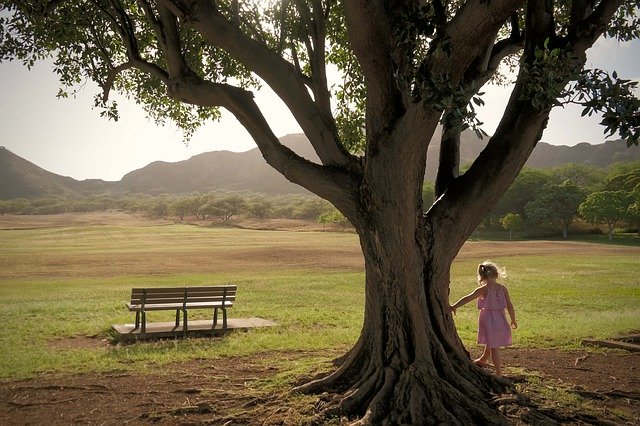
Never before have we understood so much about the benefits of nature for our kids, and its importance in their lives. As more research piles up to help us understand the vital role of nature in childhood, there are still many popular misconceptions about the outdoors and its role in a child's life. Here, we round up some of those myths and hope to set the record straight.
1. Kids are more active in the summer
With its easy, breezy days and ample time for active play, it would make sense that summer is a more active period in a child’s life. After all, during the school day, kids are busy, well, learning. But not according to research that looked at physical fitness in kids in summer versus the school year. In one extensive study, researchers noted that overweight and obese children experienced increased weight gain during the summer. Sadly, studies demonstrated that school year fitness improvements were lost during the summer and that physical activity declined across the summer.
"Data actually shows kids tend to have more sedentary time and less structured physical activity. There's also data that says kids' weight goes up over the summer," said Dr. Aaron Carrel, a pediatrician and the director of the UW Health Pediatric Fitness Clinic, in an interview with NBC News.
Dr. Carrel summed it up by a reminder that summertime equals a little bit more boredom, a lot more eating, and too much screen time.
2. Rural kids get more outdoor time.
The fresh air and surrounding nature surely make rural kids immune to nature deficit disorder. But according to a study, rural children are spending more time in front of screens than in nature. The researchers surveyed 543 sixth- to eighth-grade students across rural South Carolina and found that screen time was higher than outdoor time for almost every demographic group that the researchers examined. Students who reported increased screen time tended to also report lower levels of connectedness to nature.

3. Second Hand Nature is not beneficial.
Ain’t nothing like the real thing when it comes to nature. But of the many benefits known from spending time in nature (better learning, a calmer mind, reduced stress, sense of environmental stewardship, enhanced wellbeing) does nature from a secondary source such as screens, a view, books, videos, apps, offer the same effects? Interestingly, sometimes it does. According to a round-up of studies looking at the topic of “second-hand nature” from the Children & Nature Network, second-hand nature can be helpful in a variety of situations.
For example, literature that focuses on the beauty and wonder of nature can help young children develop an understanding and appreciation of the natural world and provide a firm foundation for the development of environmentally responsive individuals and the establishment of a more sustainable society. And images of nature in different forms of art and depictions of nature in children’s literature can promote understanding and appreciation of the natural environment as well as promote children’s health and well-being.
It’s a good thing that the research is seeing the benefits of indirect experiences with nature as this way of accessing nature is becoming even more prevalent. Questionnaires completed by over 750 children showed that they had more indirect experiences with nature than direct experiences. Results also showed that both vicarious activities (e.g., watching nature programs) and observation activities (e.g., bird watching) were statistically significant predictors of connectedness to nature.
4. All kids "naturally" love the outdoors.
Well...this study might be a shocker. But a University of Chicago-led study looked at how kids develop a relationship with the outdoors. It found that while adults prefer nature to more developed or controlled environments, kids don’t. Kids actually prefer cities. So when your kids tell you they don’t like hikes, there could be some truth behind it. Naturally, we think that a child's relationship and perception of nature can only be improved by positive outdoor experiences. And many of them.
5. Kids are more active on weekends and holidays.
Sitting at desks for the majority of the day, school isn't a very active day for most kids. For sure our kids are more active on weekends or holidays when they are home. Alas, no. A study of the activity level of grade 5 students at 60 schools across Alberta, Canada observed that children are more active on school days than on weekends and holidays when the weather turns bad.
A number of factors likely contribute to the trend: electronics, overscheduled kids, less active lifestyles. But one UK study uncovered some interesting information. In a survey of British parents, over half reported that they do not think they are fit enough to play actively with their kids during the summer holidays. The survey found that 65% of parents are worried they won’t keep up with their kids over the 6-week break, suffering from “fitness anxiety”.
6. Play is play. It doesn’t matter where it takes place.
When it comes to play, getting kids to be active is all that matters. Of course, we would never discourage fun, creative, imaginative, active play. But a look at the research comparing indoor versus outdoor play does seem to favor outdoor play. A range of reasons is at “play” here starting with the fact that outdoor play tends to get kids moving more. One study noted an increase in moderate to vigorous physical activity (from 1% to 11%) was seen with outdoor time in childcare settings versus indoors. And when outdoor play was child-led, the amount increased to 17%.

7. Nature is most beneficial when it’s big and impressive.
Between family bonding, lessons in self-reliance and physical challenges, a summer whitewater rafting adventure or backwoods camping trip is likely an experience your family will never forget. But it doesn’t take a stockpile of gear from REI or the best rated outdoor app to get some of the purest and most needed benefits of the outdoors for you and your kids. Your outdoor family time can be as simple as taking a walk outdoors with your kids. And while you can certainly head out to the nearest park, you can simply take a walk in your neighborhood. Really, all you need is a sidewalk or a safe path to walk on and some nature along the way.
8. Kids are more likely to get hurt outside.
As much as we want to protect our children from every scrape and injury, some experts say that keeping kids safe actually means letting them take risks. Many experts say that outdoor play, in fact, risky play, is a necessary element of childhood. They say risky play helps children learn, build resilience and confidence. Like the old adage, you learn from your mistakes. Without bumps and bruises, how will children learn how to control their bodies or test the limits of their physical abilities.
9. No need to worry about getting older kids out in nature.
Older kids should have a lifelong nature connection from their early childhood experiences. No need to put the effort into getting them out in nature. Big misconception. Unstructured free outdoor play tends to drop off for preteens and teens likely due to the invasion of electronic devices in a tween or teens life. When researchers from the University of Derby, the University of Exeter, Natural England, Historic England, the National Trust, the Royal Society for the Protection of Birds and The Wildlife Trusts looked at nature connection in older kids, they found that young people’s connection to nature drops sharply from the age of 11 and doesn’t recover until they are 30. So get those tweens and teens out there!
10. It’s unhealthy for a child to play outside in winter.
Get your child’s winter gear ready. The fact is that winter play can offer your child a bunch of benefits that summer play can’t compare to. And as long as you are smart about winter play by watching the weather conditions carefully and dressing your child properly, your child can have a blast in the cold.
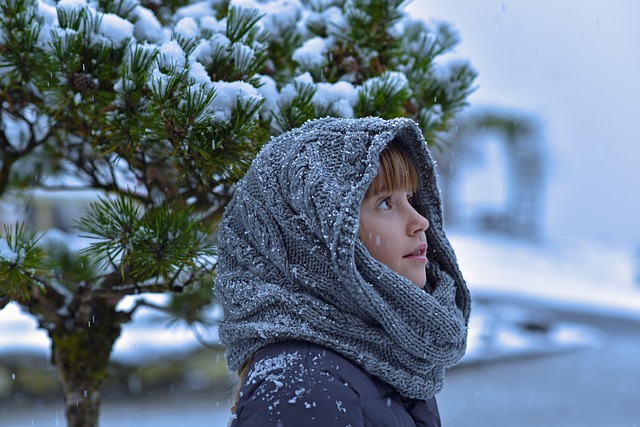
11. Parents want kids to learn inside.
Even though the benefits of outdoor learning for children of all ages are well known, very few schools take advantage of the outdoors as a learning space. Many reasons may lie beneath but parental buy-in shouldn’t be one of them. One study looked at parents’ and teachers’ perspectives of the benefits of outdoor time for children. It found that parents considered the outdoor environment equal to the indoor classroom in terms of providing an effective environment for learning. In fact, three-quarters of parents believed that their children “always” or “often” learn equally well in either environment. However, parents said that they “consider both environments equally beneficial as long as the time children spent outdoors is structured and adult-led.”
12. Being outside is too distracting for kids to learn.
Quite the contrary! Among the many benefits of nature for a child’s physical, social and academic development, several significant studies have found that the outdoors may also reduce ADHD symptoms. Experts point to Attention Restoration Theory, or the idea that natural environments restore attention, for the effect. The idea states that only focus our attention for a certain period of time before feeling mentally fatigued and so a short break in natural environments helps restore it.


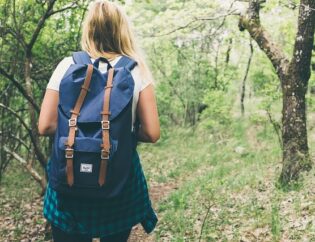
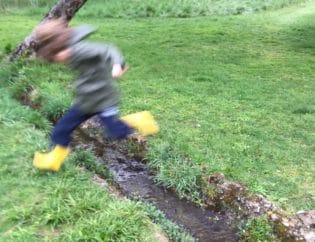
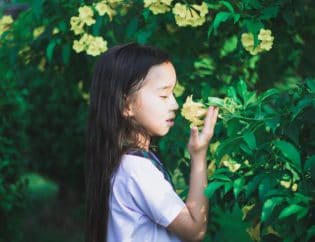



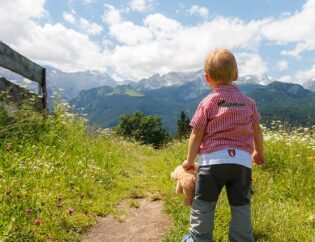

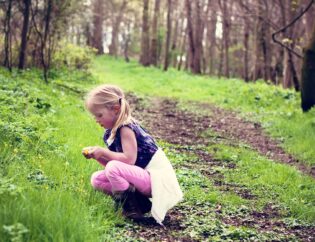

Really interesting read! Another common myth is that outdoor play should be completely safe. In fact, a degree of risk is great for development of skills such as decision making, leadership, and teamwork.